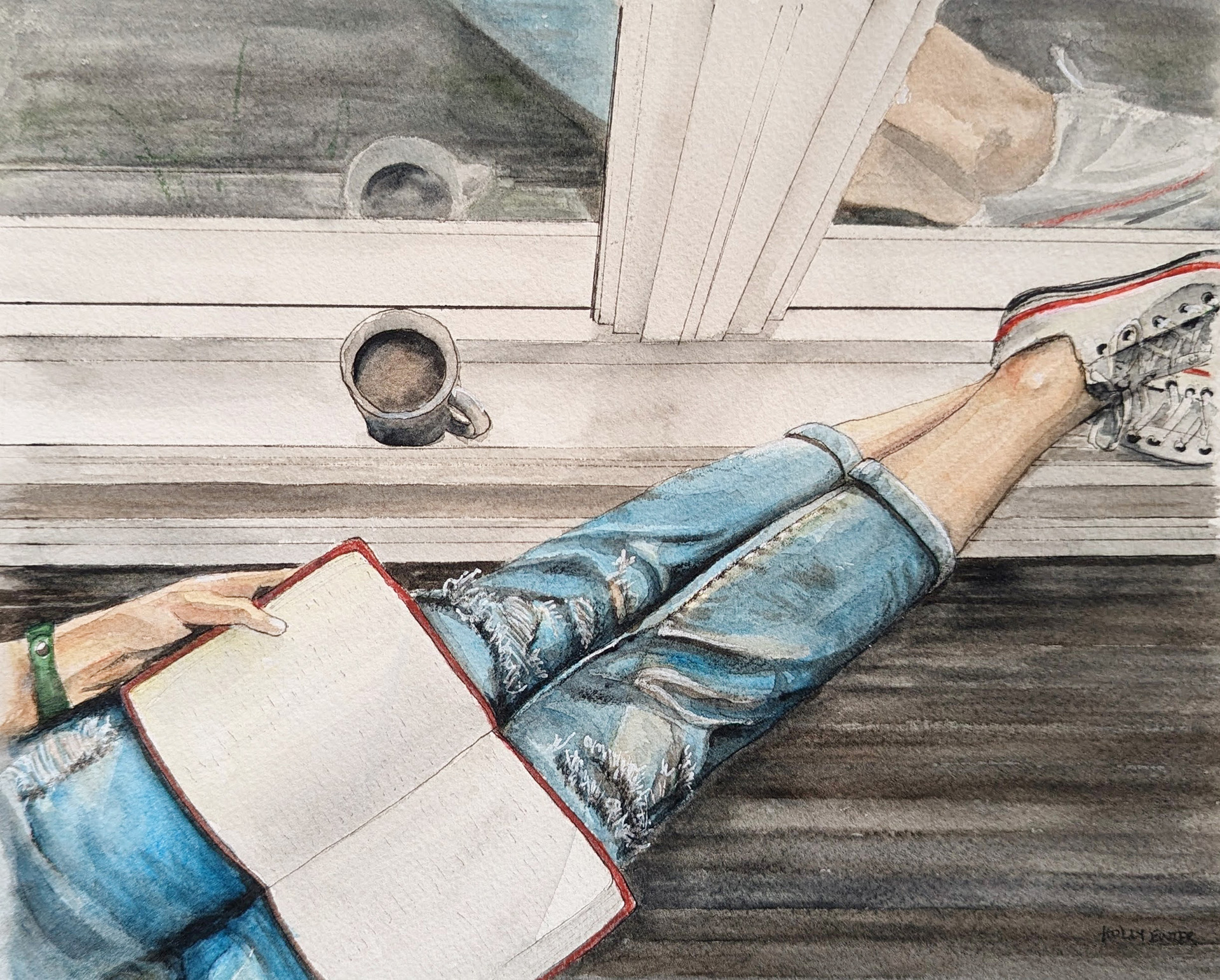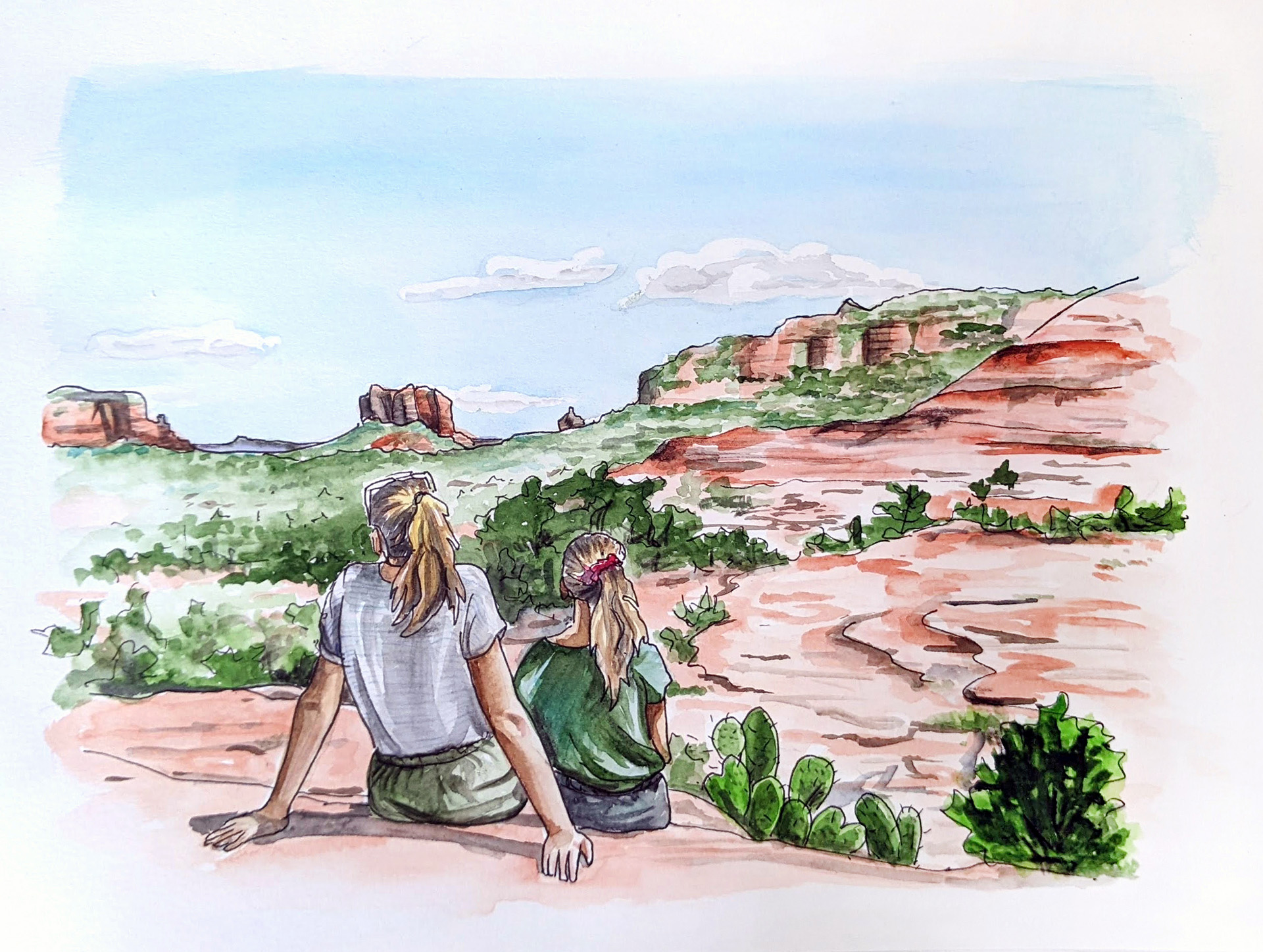

I’ve moved only once in my life. I’m not even sure you could call it a move, as it only involved transporting a few boxes of belongings from my childhood home to the house my husband and I bought as newlyweds. My newlywed self would have been amazed to find out that I’d still be in this “starter home” over 20 years and five kids later. My teenage self would probably be amazed that I was even in the same province. Clearly, I underestimated my own deep-seated longing for stability in the form of a place to call home.
This past Christmas, our family watched one of our favourite holiday classics, It’s a Wonderful Life. When the main character, George, argues with his father that he wants to do something “big and important,” rather than carry on the work of the family business, the Bailey Building and Loan, his father replies: “You know, George, I feel that in a small way we are doing something important. Satisfying a fundamental urge. It’s deep in the race for a man to want his own roof and walls and fireplace, and we’re helping him get those things in our shabby little office.” It may be a bit far-fetched to imagine, as the movie would have us do, that not meeting this fundamental urge would lead to a Pottersville dystopia, replete with bitterness, greed and every kind of vice. But the desire for home deeply resonates, and perhaps this story serves to remind us not to underestimate it either.
This longing for finding home and place has long been the experience of human hearts. It’s why Adam and Eve’s expulsion from their home in Eden was so painful. Why Cain was agonized by his punishment of having no permanent home. It’s why we marvel at Abraham’s obedience to leave all he knew. Why Lot needed to be forcibly pulled by the hand from Sodom, though we’re told that the evil there tormented his soul. Why the Israelites’ forty years of wandering in the desert were particularly difficult. Why the exiled Israelites sat by the rivers of Babylon and wept and wrote songs of their longing for Jerusalem.
It’s why my sisters and I will still slowly drive by our childhood home when we happen to be in the area, searching for the familiar amidst the many changes its new owners have made. When my parents moved out of the home we all grew up in, I think we were all a little surprised by our sentimentality over this loss. It was just a house, after all. But more than just brick and mortar and wood, it was the place of memories that made it more. It was home. It was where our dad woke us up with cheery good mornings or the rustling of newspaper in the woodstove. It’s where meals and coffee times were scheduled with extraordinary precision. It’s where my four sisters and I put on elaborate theatricals and concerts for our long-suffering parents and neighbours. It’s where we cried over break-ups and heartache, and where each of us awoke with joy on the morning of our wedding days. It’s where we learned to walk and swim and draw and play piano and to love books and get along, and to be friendly when we were naturally shy because there were always people coming and going. It’s where we sat in the window seat of our upstairs bedrooms and agonized over life’s huge decisions, like where to go to college, whom to marry, and whether or not to perm our hair. It was the launching point for all our adventures, and the safe landing place to return to when they were over. It was where I brought home stray cats and new friends and they all felt at home too. It’s where we learned to make Bible reading a daily habit, and pondered our place in the bigger story it contained.
The house my husband and I bought together was one we considered a starter home; it looked very much like a blue box that had been dumped onto a treeless town lot. In fact, that’s exactly what it was. The house had been built in a factory, then transported in two pieces to its current location by truck. The original homeowner left behind grainy VHS video footage of the interesting process for our enjoyment. Kids started to arrive, and this little blue bungalow filled up quickly. About ten years ago we started the serious process of looking for another home. We looked at many houses, but in the end, none of them seemed better than what we had. It turned out the grass wasn’t greener on the other side of the fence after all. (I say this figuratively, certainly not literally, since our attempts to deal with the ubiquitous weeds in our small slice of lawn have felt representative of the constant struggle of humankind against fallen nature. Unfortunately, we have largely given it up, and we can almost hear the groaning of this poor plot of land, in its longing to be set free from its bondage to decay.) I thought I’d be eager to move on from this house, where the ceilings were low, the trim was old, window cranks were broken, and the rooms small. The stains and dents of five kids marked floors and walls, and I was sure we needed a fresh start, and, at the very least, more room.
Or maybe we just needed to see this place with new eyes. Soon after we moved in, we planted a maple tree in our front yard, and we were astonished at how quickly it grew. Its roots, spreading deep and wide in the fertile soil, were a reflection of our own deep and wide roots that grew so quickly in this place. The ceilings are still low, the windows still need to be replaced, many dents and stains remain, but with a little more work – an addition to the house, rooms added to the basement – the house grew with us. Like other special places in my life, it has become like an old friend, worth more in its comfortable familiarity than something new and exciting.

We recently renovated our main bathroom; something on our “to do” list for several years. As we replaced the old linoleum (original to the house) with new tiles, I thought of how even this tiny room felt sacred to me. It was the place where we anxiously awaited pregnancy test results. Where little ones splashed in the bathtub, creating a tsunami of water all over me and the floor. It’s where they screamed in mortal terror when I washed their hair, then snuggled close when they were wrapped up in huge towels. Where I hid from those same sweet angels, the only place I could lock myself away for a few minutes of peace and quiet (if you call pounding on the door peace and quiet). Where a painful miscarriage left me heartbroken and inconsolable. Where many hours were spent potty training reluctant toddlers, surely the greatest achievement of my life. Where cuts and scrapes were bandaged and were made better by magical mommy kisses. Where the mirror reflected changes so slowly, I hardly noticed them until I did.
I’ve never before been so thankful to own this house. The ability to buy it all those years ago was a privilege that we felt at the time was gained through hard work and careful saving, but it turns out that it was also just a matter of fortunate timing. With the cost of real estate exploding in recent years, we’ve been told that the house we found so daunting to pay for back in 2002 would now cost nearly five times what we originally paid. Unfortunately, wage increases, though also growing steadily, have not even come close to catching up with the rising real estate costs in Canada. According to recent data, a Canadian family making the national 2023 median income of $79,876 could expect to afford a home of $315,000. But with an average home price in Canada at $757,600, the problem is clear: the average home costs far more than what the average family can afford.² During a recent conversation with a friend, she lamented the impossibility of getting a home of her own, the uncertainty and loss of stability that comes from being a perpetual renter; I could hear the anguish in her voice. Other families we know agonize over selling the homes they recently purchased due to rising mortgage rates. For many young people, including our own children, the American dream of home ownership begins to feel unattainable. Hard work and careful saving may no longer be enough.
For those who have no place to call home, this longing is real. How well our Saviour understands the deepest desires of our heart, able to sympathize even in this. Jesus’ life of ministry meant leaving the comfort of home; the Son of God tells us he had no place to lay his head. This was also the experience of many heroes of faith, who knew they were strangers and pilgrims on the earth. “These declared plainly that they seek a homeland,” the author of Hebrews tells us. This cry of the heart was not met with the earthy comfort of a home, but rather, something more: an eternal home. They had left not only “brothers or sisters or father or mother or children,” but Jesus adds “houses and lands” to this list of painful partings. They looked for a home not built by human hands, and found the unfathomable reward of an eternal dwelling with their Saviour.
For these then – the homeless, the displaced, the uprooted, the pilgrims and strangers – heaven holds the greatest sweetness. It’s what this deep-seated desire for home is really all about. If you’re still looking for a place to call home, perhaps the place you seek awaits. And if we have a little taste of that on earth, it reminds us that the best fulfilment of that desire is still to come.
Holly Enter makes her home in Ontario, Canada.
NOTES:
¹ Deborah Stokes, “Canada’s Unhinged Housing Market, Captured in One Chart,” National Post (November 21, 2021).
² Jordan Fleugel, “Average Home Price 141% Higher than Median-Earning Family Can Afford: Report,” BNN Bloomberg (October 26, 2023).

The Kirby Laing Centre for Public Theology in Cambridge. Charity registered in England and Wales. Charity Number: 1191741
Kirby Laing Centre, Office 1, Unit 6, The New Mill House, Chesterton Mill, French’s Road, Cambridge, CB4 3NP
© 2025 The Kirby Laing Centre for Public Theology in Cambridge